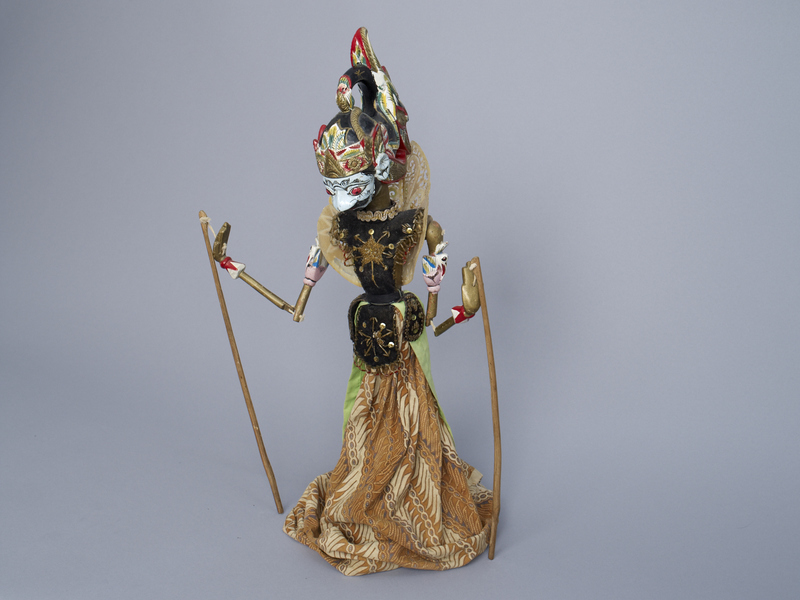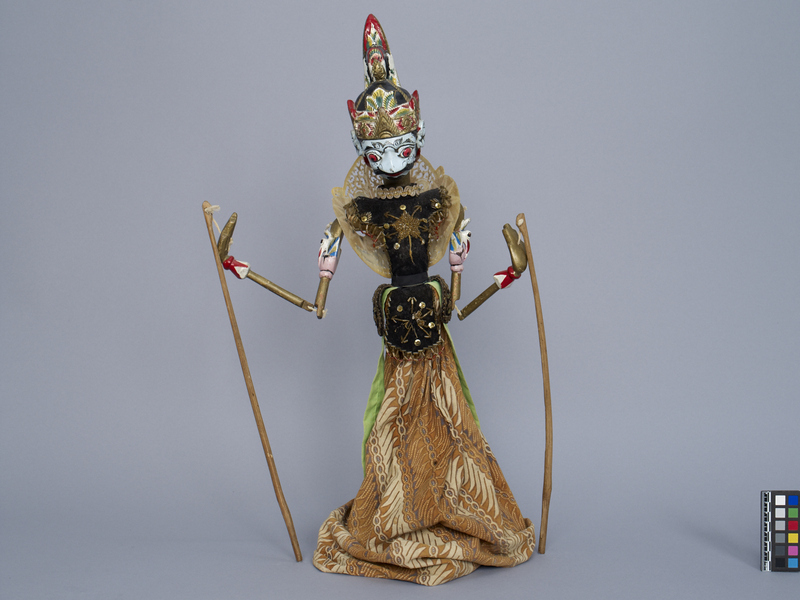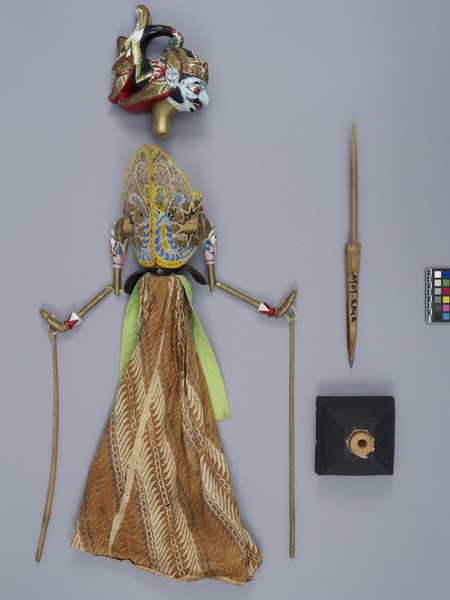Rod Puppet Item Number: 2872/34 a-b from the MOA: University of British Columbia



Description
Rod puppet named Gatotkaca. The face is blue, with black decorations painted around the red eyes. A moustache and beard surround the red mouth. The puppet wears an intricate diadem, with a decorated hair curl that features the image of an eagle. On his back are finely cut wings, decorated with paint on the outside and sewn together at the middle. He wears a sleeveless top decorated with beads, and a matching apron with green ribbons that hang down the sides. A sarong is attached at the waist and hides a wooden stick that extends up through the torso and into the puppet’s head to control its movement. The arms are decorated with bracelets carved like birds, and are moveable at the elbows and shoulder by wooden sticks attached to each hand. The wooden stand (part b) is square and painted black.
History Of Use
Wayang golek (rod puppet) character from the Indian epic, the Mahabharata. In the Mahabharata, Duryudana, the leader of the evil Kurawa family, and his 99 brothers have usurped the throne and kingdom of Hastinapura from their cousins, the five Pandhawa brothers. Wayang kulit plays follow the adventures and battles between the Kurawas and the Pandhawas for Hastinapura. Ultimately, good triumphs over evil: through moral conviction and loyalty, the Pandhawa brothers win back their rightful throne. Wayang kulit shadow play is over 1000 years old. It is thought to be derived from the leather shadow puppetry traditions of southern India, like tholu bommalata, which came to Java with the spread of Hinduism in the first millennium. In Java - part of the largely Islamic Republic of Indonesia - this highly distinctive form of shadow puppetry is valued as a pusaka, a sacred treasure of the royal court of Yogyakarta. They are inspired by the Indian epics, the Ramayana and the Mahabharata, as well as stories of the history and folklore of Java, with a local spin. The plays are performed to mark special occasions such as birthdays, marriages, and religious events. Wayang shadow puppetry was inscribed on UNESCO's List of the Intangible Cultural Heritage of Humanity in 2008.
Iconographic Meaning
Gatotkaca, a hero and brave warrior who has magical powers and can fly. He is the son of Prince Bima. A Sundanese wayang golek purwa figure of the punggawa (strong male) character type.
Item History
- Made in West Java, Indonesia
- Collected between 1990 and 1999
- Owned by Betty Cairney
- Owned by Jack Cairney before March 15, 2011
- Received from Jack Cairney (Donor) on March 15, 2011
What
Who
- Culture
- Sundanese
- Previous Owner
- Betty Cairney and Jack Cairney
- Received from
- Jack Cairney (Donor)
Where
- Holding Institution
- MOA: University of British Columbia
- Made in
- West Java, Indonesia
When
- Collection Date
- between 1990 and 1999
- Ownership Date
- before March 15, 2011
- Acquisition Date
- on March 15, 2011
Other
- Condition
- poor
- Accession Number
- 2872/0034 a-b